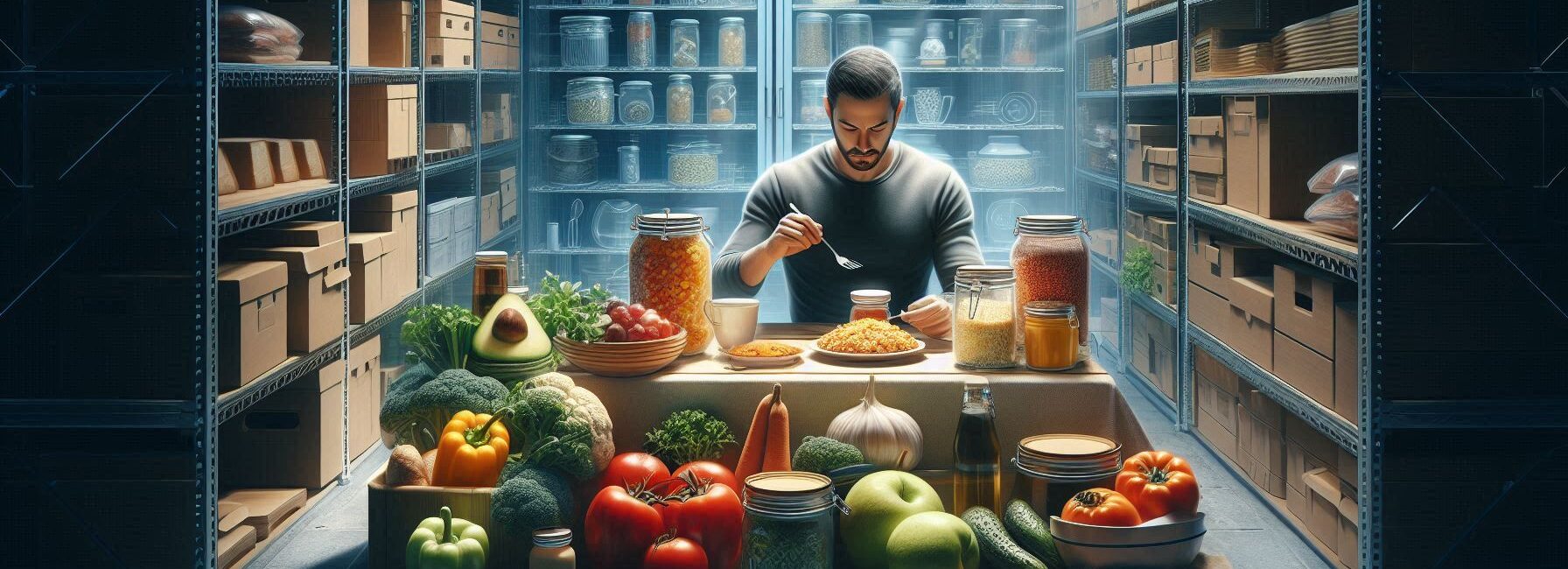Please Note: This post may contain affiliate links. If you click one of them, we may receive a commission at no extra cost to you. As an Amazon Associate, I earn from qualifying purchases.
Last Updated on November 1, 2025 by Kevin Collier
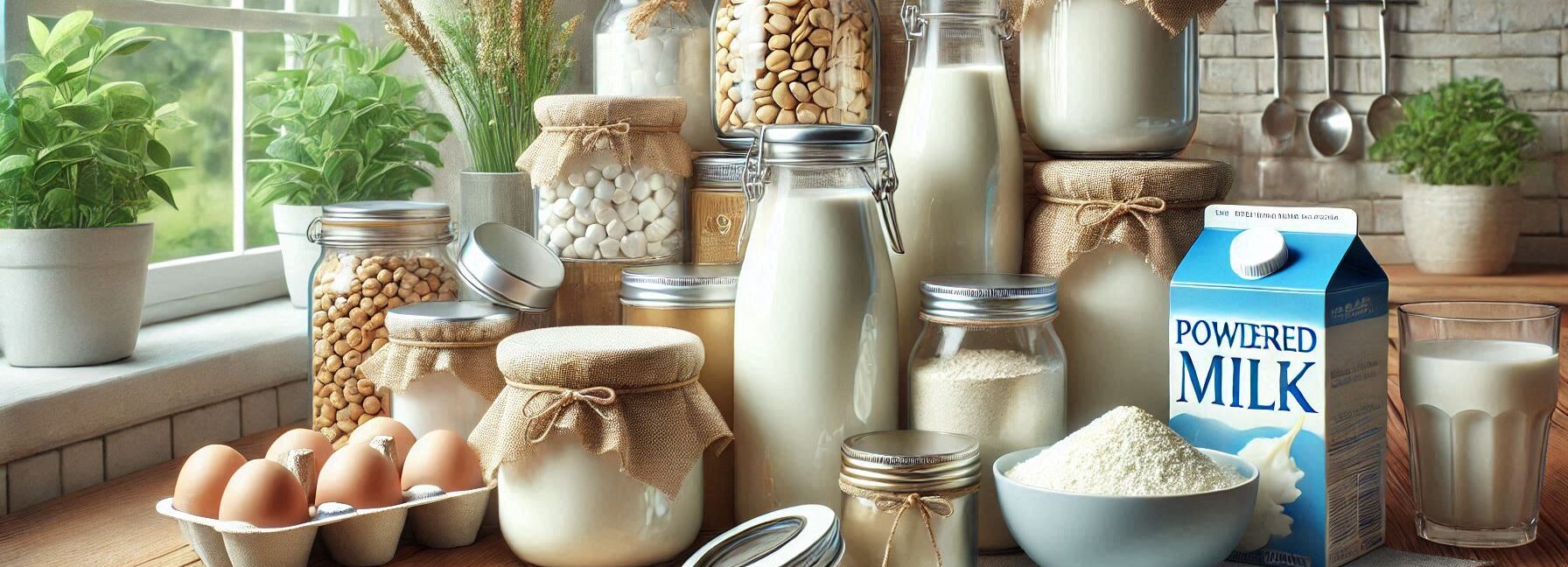
Top Takeaways and Key Concepts
- Choose Nonfat Powdered Milk: Opt for nonfat dry milk for longer shelf life.
- Use Airtight Containers: Store in Mylar bags or #10 cans with oxygen absorbers.
- Keep in Cool, Dark Place: Maintain storage temperature below 75°F (24°C) to prevent spoilage.
- Refrigerate or Freeze After Opening: Transfer to airtight containers and refrigerate or freeze to extend freshness.
- Rotate Stock Regularly: Use a first-in, first-out system to ensure older stock is used first.
You’re not the only one staring at that carton of milk, wondering about its chances against a zombie apocalypse. It’s funny, right? But hey, lucky for us, there’s a better solution!
Powdered milk. Ever tried it? It’s like magic. It stays good for a long, long time. You can stock up without worrying about expiration dates. No more last-minute decisions on when to drink that milk before it goes bad. And it’s got the nutrients we need, especially when fresh stuff is running low.
Let’s talk about how to store these dairy delights. First, keep them in a cool, dry place. No one wants their powdered milk to end up in a hot, humid spot. It’ll just clump together and won’t mix well later. A pantry or cupboard works great. Just make sure it’s sealed tight. You don’t want little critters helping themselves!
You could try using airtight containers too. Think about all those pretty jars you’ve been saving. They can be perfect for storing powdered milk. Label them, so you know what’s what. You might even have fun decorating them!
When you need to use it, just mix it with water. Just like that, you’ve got milk! Use it for cooking, baking, or just drinking. It’s super versatile. You can whip up a creamy mac and cheese or pancakes for breakfast. Yum!
Knowing you’ve got this in your stash can make you feel secure. You’re prepared. And who doesn’t love being ready for anything? Keeping powdered milk on hand means more delicious meals when supplies get tight. Plus, it’s a great way to make sure your family gets the nutrients they need. So, stock that shelf and feel a little easier about your food choices. Because, really, who wants to stress while preparing a nice meal? Not us!
Understanding Powdered Milk: What You Need to Know
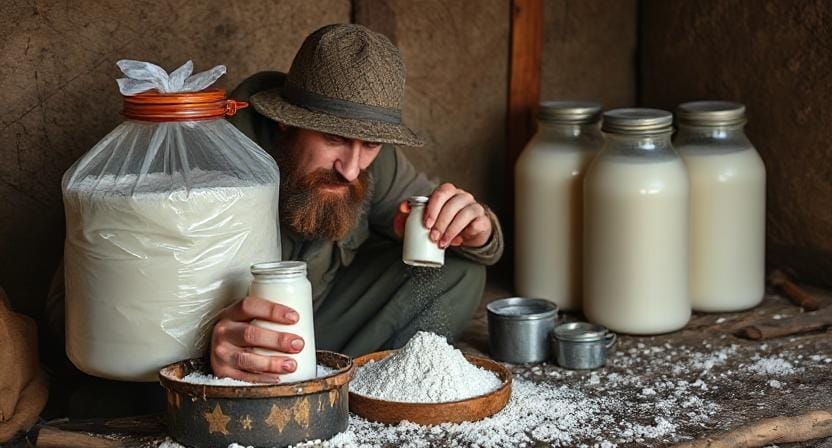
*** Shop for Survival Gear - Tools - Kits ***
Survival Gear - Bags and Backpacks - Knives - Boots/Footwear - Communication
Outdoor Cooking - Gloves - Hydration - Dry Boxes - Water Filtration Systems
Tents - Sleeping Bags - First Aid Kits - Multi-Tools - Flashlights - Fire Starters
Navigation - Survival Food - Night Vision - Headlamps - Stun Guns - Binoculars
To start, let's make sure we know what powdered milk is, because it's not just a strange science experiment that went awry. It's like ordinary milk, but with all the water taken out. You could say it's the superhero version of regular milk.
1. Different kinds of powdered milk: There are a lot of them! Whole powdered milk has fat in it, however skimmed variants have had most of the fat taken out. There are also particular powders, such as buttermilk powder and evaporated milk powder. Each one has a varied taste, like multiple varieties of ice cream, but without the brain freeze.
2. Nutritional Benefits: It's interesting that powdered milk keeps most of the minerals that are in liquid form, such calcium and protein. This means that you can still feel good about getting your daily intake even if you're eating supper by candlelight during a blackout.
3. Shelf Life: If you store powdered milk properly, it can keep for 2 to 10 years or longer! It's like the cockroach of food: it can live through anything, including nuclear fallout. But bear in mind that freshness fades with time, so pay attention to those expiration dates.
Picking the Right Storage Boxes
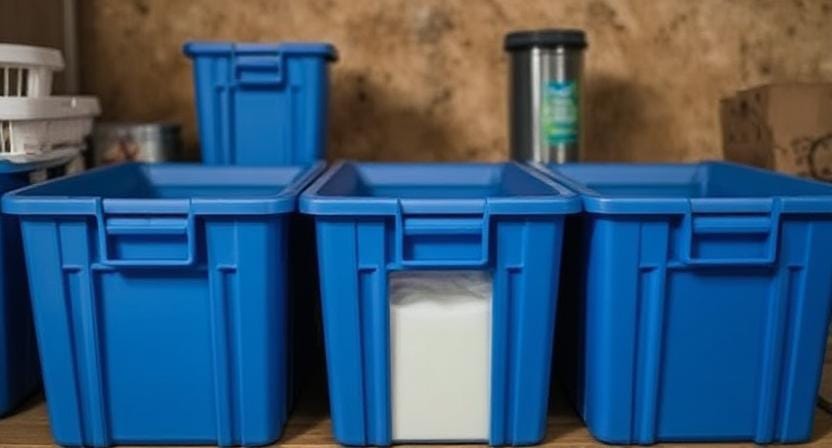
Choosing the right containers is an important part of storing powdered milk, by the way. If you think a Ziplock bag will be enough for long-term storage… Well, bless your heart!
1. Containers that are airtight: Buy high-quality airtight containers made of glass or heavy-duty plastic. These will keep out moisture and bugs. Trust me, no one wants ants to crash their pantry party.
2. Mylar Bags with Oxygen Absorbers: If you want to keep your things safe from air exposure, you could choose to use Mylar bags with oxygen absorbers. They keep food fresh longer than I keep my New Year's resolutions.
3. Labeling Is Important: Don't forget to put clear labels on everything with the date you bought it! It will keep you from mixing together powdered sugar and powdered milk, which could make your pancakes quite confused!
How to Store Dairy Products Safely
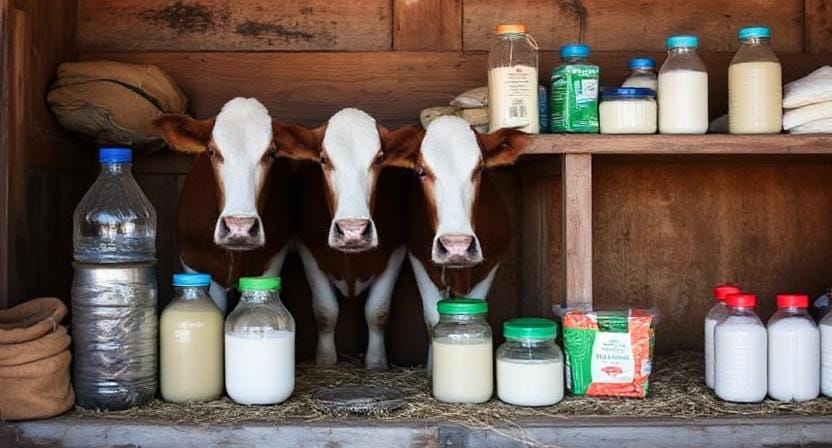
Let's speak about other dairy items now because who doesn't like cheese? Is it just me? That's fine!
1. Ways to Store Cheese: You can wrap hard cheeses in wax paper or parchment paper before putting them in an airtight container or vacuum-sealed bag to keep them from getting moldy or going bad.
2. How to Keep Butter Fresh: If you wrap it up right, butter may be frozen or kept in a cold spot. It should last for several months this way! Just don't put it next to your cousin's old fishing gear (believe me, scents don't mix).
3. Tips for Yogurt and Sour Cream: These treats don't last as long as others, but you can still freeze them! Put them in ice cube pans and then put them in freezer bags. You'll always have yogurt cubes ready for smoothies!
Controlling the Temperature Is Important
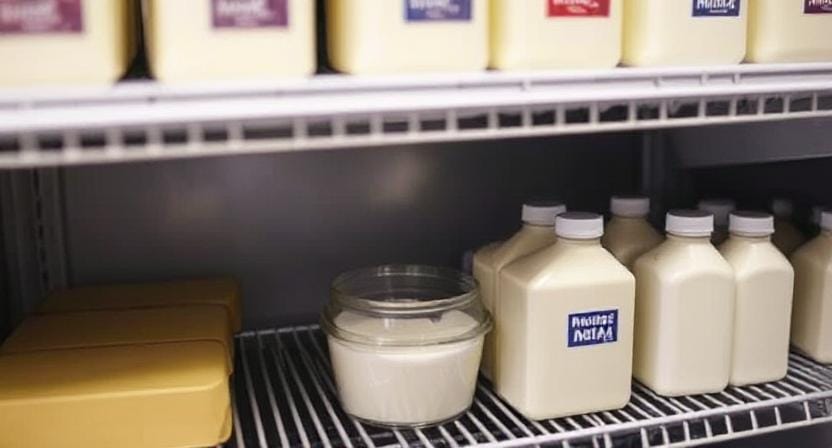
To be fair, temperature has a big effect on how long things last on the shelf, even your favorite snacks and dairy goods.
1. Keep your dairy products in a cool place away from direct sunshine. This means you shouldn't put them next to the window where you take all of your plant selfies.
2. Practices That Are Good for the Freezer: If you want to freeze any of the things we talked about earlier (like butter), make sure they are firmly wrapped so they don't have freezer burn, which is worse than having soggy cereal!
3. It's important to check regularly: Check on anything you have stored every few months. This can help you find any problems before they become big problems, like when I tried to plant last summer.
How to Use Powdered Milk Well
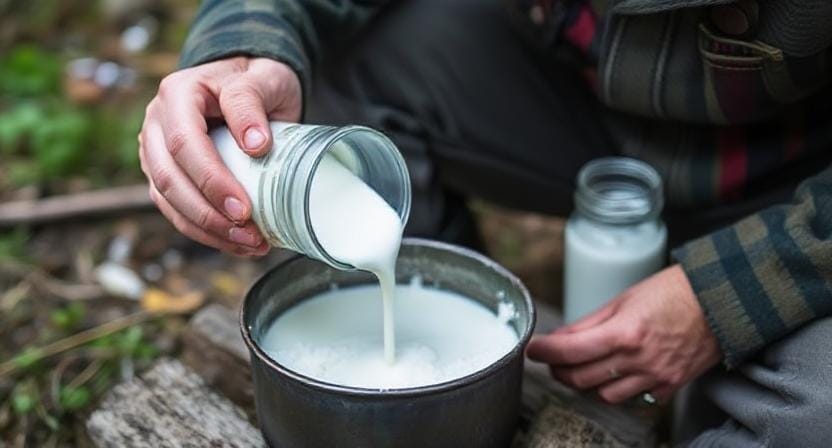
Once we have carefully put this magic powder away, how do we use it?
1. How to Rehydrate: To rehydrate powdered milk, mix one part powder with four parts water (or follow the instructions on the packaging). There you go! You have liquid gold that you may use in recipes or cereal.
2. Cooking Tips: Use powdered milk in pancake and muffin recipes; it makes them creamier without taking up space in your fridge. Plus, who doesn't love fluffy pancakes?
3. For emergencies: If you can't get fresh dairy (like when you're camping), understanding how to make creamy bliss from dry powder can greatly improve your campfire meals—or at least take your mind off of charred hot dogs.
Conclusion
It can be quite easy to store powdered milk and other dairy products. You don't need lab coats or hard-to-read charts. You're all set with just a few simple steps!
Get some decent containers. Think about glass jars or even strong plastic ones. Make sure they stay closed. That keeps the milk fresh and protected from bugs and other small animals. You don't want to uncover something unexpected when you open a jar.
The temperature is also important. Put them in a cold, dry place. A closet or pantry can be just right. No one wants their milk to become a research project. And it helps everything taste good.
Check your stash every now and again. Just have a look inside the jars. Check to see that nothing has gone wrong. A simple look can tell you a lot. If you see something wrong, throw it away. Not a big deal. Just get new supplies to replace it.
You'll be ready for more than just regular meals; you'll be ready for surprises, too. And let's be honest: you'll be ready if zombies come knocking on your door searching for grub. Picture saying to your friends, “Don't worry, I have powdered milk!” They'll be amazed.
This way, you can enjoy all the nice things about dairy without any concern. You and your family both win. Knowing you have nice choices hidden away will make you feel good. So, let's keep that shelf full and eat some good food, even when things are crazy!
Frequently Asked Questions
Why is nonfat powdered milk recommended for long-term storage?
Nonfat varieties have lower oil content, which slows oxidation and significantly extends shelf life compared to whole milk powders.
What containers work best for storing powdered milk long-term?
Mylar bags, airtight jars, #10 cans, and containers with oxygen absorbers protect against moisture, air, and pests.
Where should powdered milk be stored for maximum freshness?
Store in a cool, dark, and dry environment below 75°F to prevent clumping and nutrient loss.
Do I need to refrigerate powdered milk after opening?
Yes, once opened, repackage in airtight containers and refrigerate or freeze to extend usable life.
How do I rotate powdered milk effectively?
Use a first-in, first-out system, placing newer stock behind older containers and checking dates routinely.
Can powdered milk be used for cooking and baking?
Yes, rehydrated or dry-mixed powdered milk works well in recipes like sauces, baked goods, and breakfast mixes.
How long can properly stored powdered milk last?
Depending on storage method and temperature control, nonfat powdered milk can last several years when unopened.
Suggested Resources:
Powdered Milk Storage Guide
https://www.extension.iastate.edu/publications/pm1970.pdf
How To Freeze Cheese Properly
https://www.thespruceeats.com/how-to-freeze-cheese-1388388
Long-Term Food Storage Tips
https://www.ready.gov/food-safety

Kevin Collier is a seasoned survivalist and expert in prepping and homesteading, contributing to WiseSurvive.com. With a deep-rooted passion for self-sufficiency and outdoor survival skills, Kevin shares practical advice, strategies, and resources to help individuals prepare for any challenge. His informative articles cover a range of topics, from essential survival techniques to sustainable living practices, empowering readers to thrive in any situation. Whether you're a novice or a seasoned prepper, Kevin's insights will inspire you to take charge of your readiness and build resilience for the future.



